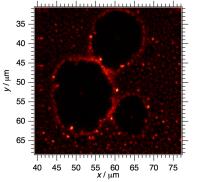Top-Down Approaches Towards Single Crystal Perovskite Solar Cells
Scientific Reports, 8 (1):
4906-- (2018)DOI: 10.1038/s41598-018-23211-x
Abstract
Solar cells employing hybrid perovskites have proven to be a serious contender versus established thin-film photovoltaic technologies. Typically, current photovoltaic devices are built up layer by layer from a transparent substrate (bottom-up approach), while the deposition of the perovskite layer itself comes with many challenges including the control of crystal size, nucleation density and growth rate. On the other hand, single crystals have been used with great success for studying the fundamental properties of this new class of optoelectronic materials. However, optoelectronic devices fabricated from single crystals often employ different materials than in their thin film counterparts. Here, we demonstrate various top-down approaches for low-temperature processed organic-inorganic metal halide perovskite single crystal devices. Our approach uses common and well-established material combinations that are often used in polycrystalline thin film devices. The use of a polymer bezel allows easier processing of small crystals and the fabrication of solution-processed, free-standing perovskite single crystal devices. All in all these approaches can supplement other measurements of more fundamental material properties often requiring perovskite single crystals by rendering a photovoltaic characterization possible on the very same crystal with comparable material combinations as in thin film devices.
